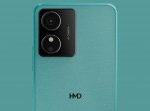When you buy through our links, Insider may earn an affiliate commission. Learn more.
timnewman/Getty Images
- A planner is an all-in-one productivity tool for writing down events, to-do lists, and goals.
- Planners come in all varieties, from dated and undated to daily, weekly, monthly, and yearly.
- The best planner is a personal choice, whether it’s small and undetailed or big and densely packed.
Paper planners are calendars that help you keep track of tasks, appointments, ideas, and so on. They let you see the week or month all at once, in a clear and legible way. But no planner is one-size-fits-all: The best planner for you might be unsuitable for someone else’s needs.
Picking a planner comes down to personal preference, whether you like to schedule things down to the minute or just jot a few weekly notes. Many have space for notes, to-do lists, and other tasks. Some people want a balance of enough space for their jottings but in a book that can easily fit in their backpack.
Planner styles get even more detailed, and we break down the ways to choose what’s right for you at the end of this guide. We talked to two stationery store owners and a productivity expert to get their advice on how to pick a planner.
“There’s lots of different, great planners, and it just kind of depends on thinking about how you want to plan your week and how you want to visualize your week,” said Jeremy Crown, who co-owns Little Otsu, a paper store in Portland, Oregon.
Whatever style of planner you prefer, you’ll be able to find something in the list below. Keep in mind that manufacturers often make their planners in several styles and sizes, and we try to reflect that in the list.
Here are the best planners
- Apica CD Free Monthly Planner
- BestSelf Co. Self Journal
- Bloom Daily Planner
- Clever Fox Non-Dated Daily Planner
- Cultivate What Matters PowerSheets Goal Planner
- Day Designer Daily Planner for Blue Sky
- Field Notes 56-Week Planner
- Happy Planner
- Panda Planner
- Passion Planner
- Rhodia Webplanner
- Quo Vadis Weekly Business Planner
- Wit & Delight Stay on Track Desktop Notepad
The Apica CD Free Monthly Planner is very affordable, with minimal frills.
Basic but very functional, Apica’s monthly planner has 32 pages, a cardstock cover, and thread binding. It’s undated, so you can pick it up and start scheduling any part of the year. There are 16 sheets of monthly calendars (one month stretches over two pages), plus another 15 pages of grid paper. There are also a couple of pages for a yearly overview. If you don’t need a super-detailed calendar but still want something with nice paper and an affordable price, the Apica is a great option.
BestSelf Co. the Self Journal
The Self Journal from BestSelf is geared toward quarterly planning, with daily, intensive options for tracking your goals.
If you’re looking for a lot of structure and prompts, the Self Journal might be right for you. It has pages of tasks and templates to guide your goal-setting. While undated, it’s only meant to last 13 weeks, so you won’t have a full year at your fingertips. The idea, though, is to break the year down into chunks and do the same for daunting projects. There are spaces to fill out what you’re grateful for, goals, and targets.
With 240 pages, the size is fairly portable, and it has a hardcover. The paper is also fountain-pen friendly.
Bloom Daily Planner
The Bloom Daily Planner comes in many versions to suit many styles, all with plenty of supplemental sheets for tracking progress.
Bloom’s planners are full of lists and charts for you to fill out and help you figure out how to schedule the year ahead. There are vision boards and habit-tracking options included. You can also sign up for additional, downloadable sheets for bill tracking, meal planning, and so on.
The nice thing about Bloom is that it has almost countless options for getting exactly what you want. The planners come in both softcover and hardcover options, and there are several planner layouts to choose from. For teachers, there are undated versions, as well as ones that start in July. If you have a wedding or new baby on the horizon, there are planners for that, too.
Clever Fox Non-Dated Daily Planner
With a full page for each day, the Clever Fox Non-Dated Daily Planner gives you space for your packed schedule or brainstorming sessions.
Clever Fox‘s daily planner has scads of room for those with busy days — or anyone who likes to doodle and brainstorm in their calendars. Each day of the week has its own page, with space to schedule from 6 a.m. to 9 p.m. There are also prompts for weekly goals (both work and personal priorities) and productivity tracking. The planner also comes with stickers to help you personalize your pages. With a sturdy cover in colors from black to rose gold to royal blue, it should be easy enough to find one that matches your style.
In addition to the daily version — which is only for six months — there are weekly options that have space for a full year. If you want a larger planner, the pro version measures 8.5 by 11 inches.
Cultivate What Matters Powersheets Goal Planner
From Cultivate What Matters, the PowerSheets Goal Planner has lots of prompts to keep you on track and inspired.
Getting started with PowerSheets is a bit of a commitment; it can take a couple of hours to fully fill out your goal sheets. There are also video explainers to help you check all the boxes. The planner is hefty and sturdy and should have no problem lasting the year. There are 160 pages, with the months spread over two pages. There are also two pages per month for monthly, weekly, and daily ideas and action items. PowerSheets aren’t made for day-to-day notes but are more for bigger-picture projects and goals.
There are lots of stickers and a pastel palette, which won’t appeal to everyone.
Day Designer Daily Planner for Blue Sky
A thorough planner with lots of room for notes, the Day Designer Daily Planner for Blue Sky is great for people with busy days or lengthy to-do lists.
Usually, Day Designer planners are $59, but the Blue Sky collaboration version is $28. The Blue Sky planner does have lower-quality paper and a flexible cover that may not stand up to wear and tear as well as a hardcover. The day has a 6 a.m. to 8 p.m. schedule, along with room for to-do lists. At the top and bottom are boxes for gratitude, your “top three” important items, and notes for the night.
If you have a larger budget and prefer a daily calendar, Day Designer’s flagship planner has a page dedicated to each weekday, with a single page for weekends.
Field Notes 56-Week Planner
Robust yet portable, the Field Notes 56-Week Planner is a great low-priced choice that still lasts a full year.
Compact yet rugged enough to toss in a backpack, Field Notes‘ 56-week planner is no-frills but fully functional. Each week gets two pages, with Saturday and Sunday sharing space. They’re undated, so you can start anytime, miss a couple weeks, and pick back up without wasting pages. As the name suggests, you get space for over a year, with 112 pages total.
At less than $20, it’s one of the more affordable planners on the list, though we wish there were a few options for the cover.
Happy Planner
Happy Planner has lots of customization options, including layout and length.
Happy Planner is all about making its products work for you, so there are quite a few ways to customize your planner. It offers horizontal, vertical, and dashboard layouts, as well as a few different sizes and undated options. You can also buy plenty of stickers to add more flair. The covers tend to be pastel, boldly colored, or Disney-themed, so it might be hard to find something more understated. We also like the planner’s discbound binding, which is like a three-ring binder you don’t have to open and close.
Happy Planners are popular with teachers, and they offer 18-month versions that start in July.
Panda Planner
The Panda Planner is meant to be hyper-focused on a three-month period, with daily tracking.
The classic version of the Panda Planner is undated, with room for three months of daily tracking. There are also weekly and monthly sections. The planner is designed for those who need lots of on-page support, with boxes for morning and end-of-day reviews, habit tracking, and priorities. Each day gets a two-page spread, and they’re undated, so you can skip weekends if you want something more work-focused. The cover and interior designs are less flowery than many other planners on the list, which may be a positive or negative, depending on what you like.
Panda Planners also come in undated, six-month and dated, full-year versions.
Passion Planner
Designed with motivation in mind, the Passion Planner has a few layouts to help you follow through with your goals.
The Passion Planner is focused on motivation and helping you achieve your yearly goals. The weekly version has places for you to note what you’re focusing on and good things that happened. The layout is vertical, so keep that in mind if you prefer a horizontal setup. There are a few styles to choose from, including undated daily and weekly layouts. On the website, you can choose whether you want your planner’s week to begin on Sunday or Monday. Small, medium, and large sizes are available, with the biggest being a bit larger than a standard sheet of paper.
If buying a Passion Planner doesn’t fit into your budget, the site has downloadable content that you can print and fit into a regular, three-ring binder. There are also digital versions available.
Rhodia Webplanner
With nice paper and a stylish design, the Rhodia Webplanner may appeal to those looking for a mix of structure and freeform planning.
Rhodia is a French notebook company with a trademark orange and black scheme, so there aren’t a ton of color options. Unfussy, with a faux leather cover and nice paper, the Webplanner gives room for a weekly schedule on one page and a grid for notes on the right. It’s a nice compromise for those who like bullet journaling but want a little more structure.
Quo Vadis Weekly Business Planner
Good quality yet affordable, the Quo Vadis Weekly Business Planner is a no-nonsense way to keep tabs on your weekly to-dos.
A well-designed, pocket-sized planner from Quo Vadis, it has a textured, faux leather cover. It’s helpful to go on the Quo Vadis website because it lays out all the options available for its planners: academic or calendar year; daily, weekly, or monthly format; and small, medium, or large size. The planner’s weekly layout is vertical, with scheduling space from 8 a.m. to 9 p.m. There are large squares on the right page for extra notes. The cover comes in several colors, and you can also find the planner in faux suede or smooth faux leather options.
Though there isn’t a lot of extra space for habit tracking, the back of the planner does have some space for personal notes and a map of the world’s time zones.
Wit & Delight Stay on Track Desktop Notepad
Portable planners aren’t for everyone, so the Wit & Delight Stay on Track Desktop Notepad is a great (big) way to jot down notes, appointments, and the like.
If you want a planner that you can’t ignore, this desk version from Wit & Delight is a good option. It’s undated, with 180 sheets. Each page has vertical space for Monday through Friday. There aren’t Saturday and Sunday spots, but there’s a “home life” box that could work for weekend activities. There are also places for notes, projects, and big picture items.
How to choose a planner
There are an overwhelming number of planner types. “I used to try to just stock as many as possible because it’s such a personal thing,” said Chandra Greer, who owns Greer, a stationery store in Chicago, Illinois.
She eventually realized it was impossible to cover every base and now just selects functional, quality options, knowing they might not be the right fit for everyone. “I’m more interested in the function of it,” she said. “Is the layout useful? Is the layout well-designed? Is the paper great? Is it something that is going to withstand being your daily friend for 365 days?”
To find out what will work for you, you can start by considering what qualities are most important to you. “I think if you sort of start with, ‘What is it that I want to use this for?’ that gives you a good starting point,” said Alexandra Cavoulacos, founder of The Muse and author of “The New Rules of Work“. You can start with format — daily, weekly, or monthly — and overall length. Do you want to keep it to a few months for a specific project, or would you prefer something that gets you through a month or even longer?
Daily, weekly, monthly
For some people, a planner is merely a portable calendar, Cavoulacos said. “They want to know where they need to be, when they have a doctor’s appointment, those sort of things,” she said. Other people want to track projects and create to-do lists. The amount of detail per day will start to dictate how much space you need. “There’s a hundred ways somebody might schedule their day,” said Greer. Some people need an hour-by-hour breakdown. If you’re mostly making to-do lists, a weekly calendar might work. If it’s more about keeping tabs on a few appointments, monthly might work.
“It’s all about what works for you,” said Cavoulacos.
Dated or undated
There are many reasons you might decide to buy an undated calendar. “People might decide on March 28th, they want a planner,” said Greer. “But if a planner is dated, they’re already three months through the year.” With an undated planner, they can get more bang for the buck by having it carry them through the next March.
Another reason might be you know yourself to be a fickle planner user. If you keep it undated, you can always pick up where you left off without wasting days’ worth of paper. People working on a big project, planning a wedding, or focusing on a specific goal might also prefer an undated planner, for more flexibility or to keep everything contained in one book.
Months or years
Some hyper-focused, daily planners will only last a few months. It helps keep them from being too bulky and cumbersome. Others are much bigger picture, with five-year plans. In between, there are standard yearly planners and academic versions, which tend to start in the summer or early fall.
The only thing that might stop you from buying an academic planner in January is that most manufacturers don’t have the current year’s available, so you’re better off waiting a few months for that.
Horizontal or vertical
You’ll often see weekly planners arranged with each week covering two pages and the days spread out horizontally or vertically. When someone comes into Little Otsu looking for a planner, co-owner Jeremy Crown first asks, “Are you more of a task-oriented planner?” He thinks people with detailed schedules or long to-do lists will prefer the column format of vertical layouts. Those who like making notes or doodling might like the horizontal layout better.
Some planners use a “dashboard” view, with a week or day on one page and the other dedicated to habit trackers, gratitude prompts, and other fill-in-the-blanks.
Size
Doctors, nurses, and chefs always want pocket-sized notebooks and planners, said Crown. You might want something big enough to hold your sprawling handwriting but small enough to carry around in your purse or messenger bag. Many planner makers will offer at least a couple of choices when it comes to size.
Minimalist or full of prompts
Planner aesthetic ranges from very barebones to packed with extras. What you like is completely personal. You’ll find plenty of basic books with a plain cover and just the calendars. On the opposite end of the spectrum, you can get a planner with quotes, charts, and check-ins. You may want something in between, with a pretty cover but few internal embellishments.
“You want your planner to inspire you, whatever that means for you,” Cavoulacos said. That could mean a simple planner with zero distractions, she said, or something with quotes and your horoscope that makes you look forward to opening the book every day. “I do think the sort of aesthetic piece, the inspiration piece, is also something that shouldn’t be forgotten,” she said.
If you do want something more stripped down, Greer suggests looking to Japanese planner makers. “You’re not going to see little flower illustrations and little quotes and 85 pages of guided journal meditation,” she said. “They keep it very simple. They’re very serious about it.”
Both Greer and Cavoulacos point out that you can add your own quotes and personalizations to even the most minimalist planner, as long as there’s space. “It could become more of a person’s little command center,” said Greer.
Paper quality
For some, the quality of a planner’s paper isn’t really a factor. There are a few things to know, though. Two Halloween-ish-sounding words that are useful to know, stationery-wise, are bleeding and ghosting. Bleeding is when the ink leaks through. Ghosting is when you flip the paper over and can see what’s written, even though it hasn’t actually bled through. “Good paper, whether it’s thin or thick, doesn’t ghost,” Crown said.
In many countries, fountain pen use is much more widespread than in the United States. The paper made there reflects that. “As a general rule, Japanese paper tends to be softer and smoother, and American paper is kind of the roughest — or we’d say the toothiest — and Europe’s kind of in the middle,” Crown said.
“Fountain pen usage is a really big factor,” Greer said. “It’s probably the number one question we get about any of our notebooks and planners, ‘Is the paper fountain pen friendly?’ and not all papers are.” If paper quality is high on your list of importance, Greer suggests taking a close look at who makes a planner.
“I definitely gravitate towards manufacturers who have a background in paper,” she said. “So they’re not so much about being a planner company. They’re about a notebook/paper company that has planners.” Some of the manufacturers that make planners with excellent paper include Midori, Paperways, High Tide, and Kokuyo Jibun Techo, she said.
Cover
Even if you’re not into paper, you’ll want to pay attention to the cover’s material. Hardcovers will stand up to more wear and tear than softcovers. “Sometimes people will trade off that durability for something that doesn’t cost very much so, but definitely people are expecting, when they purchase a planner, that it’s going to get through the whole year and not look like it was run over by a truck,” Greer said.
Binding
It’s important that planners lie flat since you’re writing in them. Many are spiral bound, but others are stitch bound. Either will let you write on them, but you can flip one side of the book behind the other with a spiral binding. “A lot of people are kind of indifferent between spiral and stitch bound now, as long as it lies flat because that’s really what they’re looking for,” Greer said.
Discbound is similar to spiral-bound, but it’s a bit different. The pages in a discbound book can be easily removed and put back in, but you don’t have to open the discs, as you would with a three-ring binder. Instead, there are little notches in the paper that fit around the disc. It makes planners more customizable because you can quickly and easily move pages from one section to another.
Another concern with the binding is whether it will keep the planner together for the whole year. Some glued-in pages might not hold out as well. “If you have something that’s stitch bound or spiral, it’s very sturdy for the long haul,” Greer said.
Bullet journaling
Bullet journaling is a system of tracking and tackling tasks, goals, and projects. It can be used with basically any notebook, but it’s not for everyone. “I think for some people you want the prompt and you want the structure to guide you because you’re not exactly sure how to organize everything,” Cavoulacos said.
“There’s a lot of stationery enthusiasts in the United States, and so there’s all these different subcultures with people who are really into making their own space on paper,” Crown said. “And that’s what bullet journaling is perfect for.”
If you’ve never tried it, you can either start with an ordinary notebook you have lying around. There are also plenty of hybrid options, with calendars and space for notes or bullet journaling.
Extras
There might be some little perks with certain planners that might be deal-makers for you. Maybe you want a front pocket to keep extra papers. Perhaps you prefer a planner with an elastic band to help keep it closed.
If the extra that’s most attractive to you is stickers, keep in mind that you can probably buy them separately.
Why not just use your phone as a digital planner?
“I don’t necessarily think a planner is for everybody, just like any particular productivity hack or tool,” Cavoulacos said. There are plenty of people who prefer to keep their calendars and notes strictly digital, and getting a paper planner might not make sense for them.
If you’re on the fence, she suggests asking yourself what’s attractive about a paper planner. “I think for a lot of people it’s slowing down, right?” Cavoulacos said. “It’s like the lack of distraction. It’s the moments to think, to cross things off — the satisfaction of crossing things off.”
Greer said she went through a few years where not many people were buying planners. Now she’s seeing more customers who want something physical to carry around and write in. She even gets tech workers buying them. “They’re saying that their schedule’s more accessible to them in some ways, in terms of getting the big picture, if they’re using a physical book,” Greer said.
For Crown, it’s more personal than a phone calendar. “It’s your life in a book,” he said. “That’s kind of what’s special about them. The end of the year, you have this book that was like, this is what I did. That’s something that the phone doesn’t do that well.”
Powered by WPeMatico






